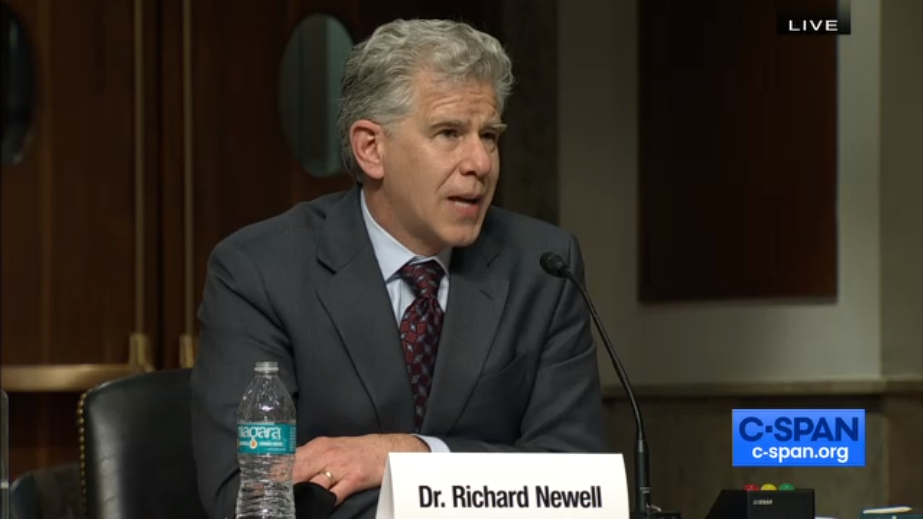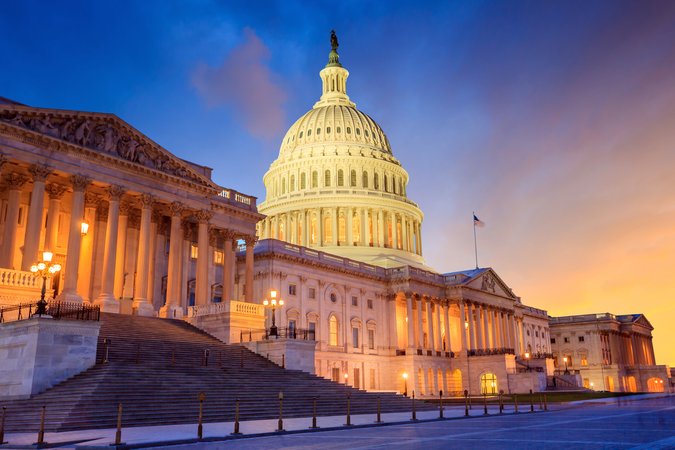Testimony to the US Senate Committee on Energy and Natural Resources on Establishing a Baseline of Global Climate Facts
RFF President and CEO Richard G. Newell testifies to the US Senate Committee on global climate, energy, and emissions trends; clean energy advancements; and the benefits of a technologically-inclusive policy approach.

Watch the Hearing
Click here to watch the recorded hearing and listen to Dr. Newell's testimony.
Key Moments
- 00:52:39 — Dr. Newell delivers his oral testimony.
- 1:25:24 — Dr. Newell walks the committee through the major sources of electrical power generation and the levelized cost of electricity for each.
- 2:00:11—Dr. Newell speaks on the levelized cost of electricity, the issue of intermittency, and total costs for wind energy.
- 2:26:41—Dr. Newell shares his thoughts on the Paris Climate Agreement.
Written Testimony
To read Dr. Newell's full written testimony with citations, please click "Download," above.
Oral Testimony
Senator Murkowski, Senator Manchin, Senator Barrasso, and distinguished members of the Committee, thank you for the opportunity to provide testimony today.
My name is Richard Newell. I’m President and CEO of Resources for the Future, an independent nonprofit research institution that has informed energy and climate policy for decades. RFF’s mission is to improve environmental, energy, and natural resource decisions through impartial economic research and policy engagement. The views I’ll express today are my own and may differ from those of other RFF experts.
I’ve had the opportunity to testify before this Committee previously, as the Administrator of the US Energy Information Administration. I therefore appreciate the importance of decisions informed by the best data, science, and analysis available.
It’s my pleasure to be with you again to speak about global climate, energy, and emissions trends, particularly from a US perspective.
The climate is unquestionably changing, and human activity is the primary driver. Since the Industrial Revolution, humans have released increasing amounts of greenhouse gases into the atmosphere, leading to higher average global temperatures, melting ice caps, sea level rise, and other impacts.
The consequences are stark. The average global temperature has already risen by 1 degree Celsius, and regions like Alaska have confronted increases of twice that amount.
The US is the second largest emitter of greenhouse gases, after China, and we remain the largest contributor to cumulative historic emissions. 83 to 85 percent of US emissions come from the production and use of energy, particularly from fossil fuel combustion. Our emissions trajectory hinges on economic growth, improvements in energy efficiency, and shifts to low- or zero-carbon energy sources. These shifts are driven in turn by three major forces: energy market conditions, technological innovation, and public policy.
US greenhouse gas emissions have declined since 2005, primarily due to declining coal-based electricity generation and increasing power from natural gas and renewables. Wind and solar power have experienced cost reductions of over 70 percent since 2009 and have benefitted from tax credits and other policies. Natural gas power has benefitted from low prices due to shale gas innovation. There have also been substantial advances in technologies that can complement intermittent renewables to provide reliable power, such as energy storage, advanced nuclear and geothermal systems, and natural gas with carbon capture.
The transportation sector is now the largest source of US greenhouse gas emissions although transport emissions have fallen by about 5 percent since 2005, principally due to improved fuel economy. The cost and range of electric passenger vehicles have improved considerably, but aviation, shipping, and long-haul trucking are more difficult to electrify.
US emissions from industrial sources such as steel, cement, and petrochemical production have shifted only modestly since 2005. Industrial processes that require very high temperatures or have process-related emissions require a distinct set of solutions—possibly carbon capture and storage, hydrogen, or advanced nuclear technologies.
Outside of energy, agriculture, forestry, and other land-use emission sources present distinct issues, and they also present opportunities for carbon removal through biomass carbon sequestration in forests, grasslands, and soils. Direct air capture of carbon is also now possible through technological means.
Because the energy system is widespread and complex, reducing emissions will require a broad and inclusive approach to incorporating new technologies. We cannot know in advance which technologies will become most competitive, so expanding our solution set makes ambitious strategies more feasible.
I’ll conclude with three key observations:
- First, the concentration of greenhouse gases in the atmosphere is increasing rapidly, causing our climate to change. Fossil fuel use is the leading cause, and the US is a major contributor.
- Second, a wide array of technological options is both necessary and available to reduce emissions across a diverse energy landscape.
- And finally, given recent cost reductions and advances in clean energy and other emission reduction technologies, ambitious reductions are now more achievable at substantially lower cost.
The success of emissions reduction strategies will depend on how well they meet the needs of different sectors, incentivize consumers and producers to choose low-emission options, and spur technological innovation.
Research shows that incentive-based policies, coupled with targeted innovation support, are the most effective means to align private sector incentives with society’s emission reduction goals. Innovation flourishes when accelerating demand for new technology is coupled with robust support for research and development.
Senators, I want to thank you again for this opportunity to appear before you. I’ll now conclude my remarks, and look forward to your questions.




